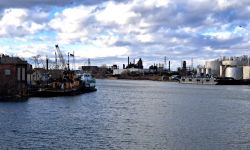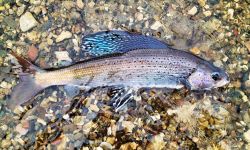Restoring Michigan rivers by cleaning up, removing crumbling dams

In the late 19th and early 20th centuries, building dams for electricity generation was the big new thing. Those hydroelectric dams provided power to nearby cities. But big companies found centralized coal-burning power plants could provide power to larger areas and make more money. Many of the generators at the dams were shut down decades ago.
Michigan has been removing more of those obsolete dams in recent years. Dam removal is no easy task.
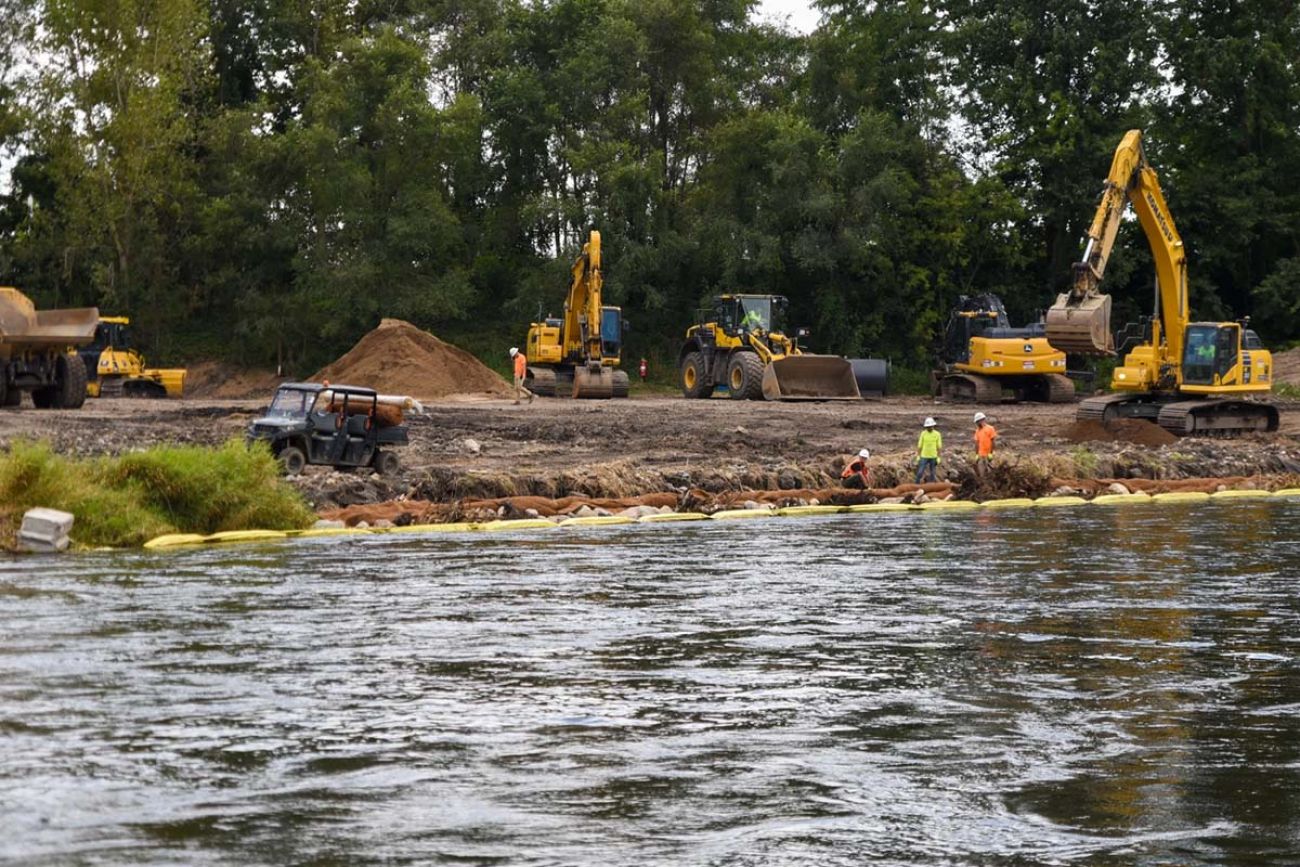
Near Plainwell in Allegan County, big pieces of construction equipment are working on what will end up being a nearly 20-year dam removal project on the Kalamazoo River.
“So there was a dam here. The water would have been about 12 feet higher in the location (where) we’re standing,” Mark Mills said at the site where the Plainwell Number 1 dam once stood. Mills is a regional supervisor for the Michigan Department of Natural Resources. He’s spent a good deal of his career working on this project.
The Great Lakes News Collaborative includes Bridge Michigan; Circle of Blue; Great Lakes Now at Detroit Public Television; Michigan Public, Michigan’s NPR News Leader; and The Narwhal who work together to bring audiences news and information about the impact of climate change, pollution, and aging infrastructure on the Great Lakes and drinking water. This independent journalism is supported by the Charles Stewart Mott Foundation. Find all the work HERE.
“There were paper mills upstream that were dumping their waste essentially in the river as waste disposal. That waste had a lot of different chemicals in it, including PCBs,” Mills said, explaining part of the reason why the job has taken so long.
Related:
- As Consumers mulls selling 13 dams, some in Michigan fear another disaster
- Michigan dams restoration delayed amid rising costs, mounting frustration
- Uncertainty for Michigan rivers, residents as Consumers reconsiders its 13 dams
- Device dating to 234 B.C. may allow Michigan native fish to bypass dams
The PCBs — which the EPA describes as “probable human carcinogens,” or substances likely to cause cancer — came from a new kind of carbon-less copy paper. You could write on the top sheet and the second and even third sheet would copy it. The method involved tiny droplets of oil in the paper that carried ink. When a pen would put pressure on the top sheet those droplets broke and bled onto the paper fibers on the layer below. That oil contained PCBs. When the paper was taken back to the mills to be recycled, the pulp was kept, but the oil substance was dumped into the river. That was standard practice until the Clean Water Act was passed.
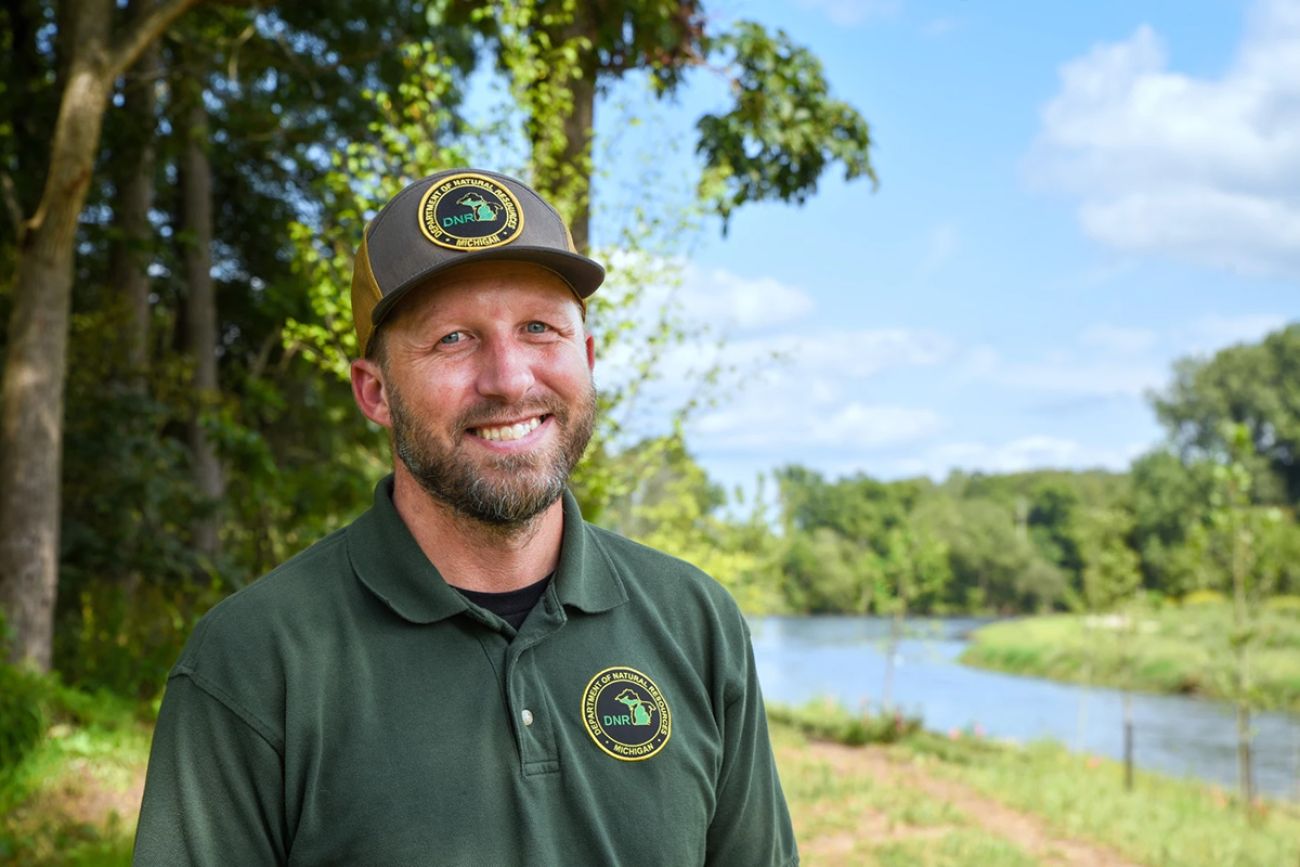
In the 1960s, the state and some municipalities took possession of several dams on the Kalamazoo River, when companies no longer wanted them.
Over time, some of them began to deteriorate and become liabilities. If they failed, it could mean a flood, as happened in Midland a couple of years ago. A flood could carry toxic PCB-contaminated sediment downstream into homes and businesses.
The State of Michigan first requested to remove the dams it owns in 1984.
“The Environmental Protection Agency said, nope, you can’t remove those dams until the contamination is removed from the impoundments,” Mills said.
The EPA lists several sites along the Kalamazoo River that were to be cleaned up, some of them as part of a Superfund site.
Arranging funding, outlining the engineering, and cleanup of the plant all took a while. Work began at the Plainwell Number One dam in 2007. To get rid of the contaminants, 120,000 cubic yards of sediment polluted by more than 4,000 pounds of PCBs had to be excavated. It was a $30 million effort.
“The fortunate part is that the bulk of the money here is coming from the paper companies that were the polluters,” Mills pointed out.
In this case the last owner of the papermill was Georgia-Pacific.
That work was just demolition and cleanup. It did not restore the river to its natural state.
That restoration began in 2017 and won’t be finished until next summer.
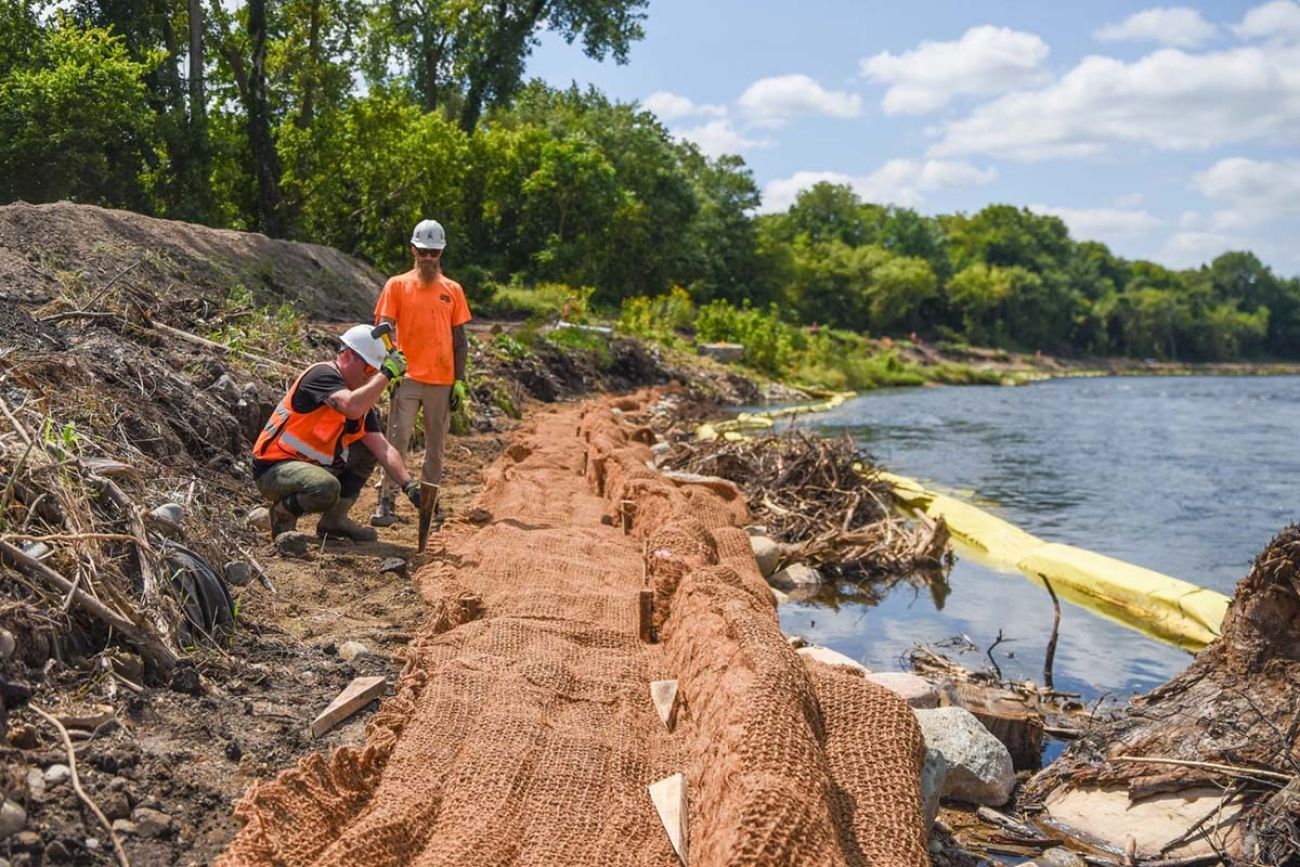
Ryan Allison is an ecologist with SWCA Environmental Consultants. He was staking down what looks to be a rope netting along the bank. It’s actually coconut fibers called coir. The manufacturer calls it BioD Block.
“It provides temporary erosion control, while the native vegetation establishes here. It prevents the bank from eroding, Allison said.
On the other side of the Kalamazoo River from where Allison was working, new trees have been planted to restore what was once the forest floodplain. Climate change has fueled more intense storms. The river needs someplace to go when the water gets high so that communities are not flooded.
These new trees and shrubs along the river are also habitat for wildlife.
Tiffany Schriever is an associate professor in biological sciences at Western Michigan University. She said taking out the dam and restoring the river to its original current is beneficial.
“Because you have faster flowing, more oxygenated water. And then the sediments are cleared out of those spaces around all the rocks and everything on the stream bed, allowing for invertebrates to take hold, to have more habitat for fish to have habitat to spawn in,” Schriever said.
One of her Ph.D. students heads up the team surveying the river at the restoration site. Sara Diller said the samples they took a couple of weeks ago found a lot of caddisflies, which is a good thing. Those insects thrive where the water quality is better.
“In terms of fish, we’re seeing a lot more fish that you’d expect to see in rivers. There’s these darters that are specific to rivers, and we just we’re seeing a great abundance of them,” Diller said.
That means fish like small mouth bass — popular with anglers — also ought to do well here.

A few years ago, not many people kayaked this section of the Kalamazoo River. It was difficult to get past the dam and it wasn’t all that scenic.
Lois Heuchert owns the Plainwell Kayak company. She started routing her customers through this segment of the river a few years ago. Now, a lot more people who own their own kayaks are following suit. Things like kayaking and fishing can be good for the local economy.
“In Plainwell, you know, it’s selling more ice cream or it’s selling more lunches, dinners, breakfasts, whatever the case. But more importantly, it’s just giving people an opportunity to get out, enjoy nature, and just get away from the craziness of the world,” Heuchert said.
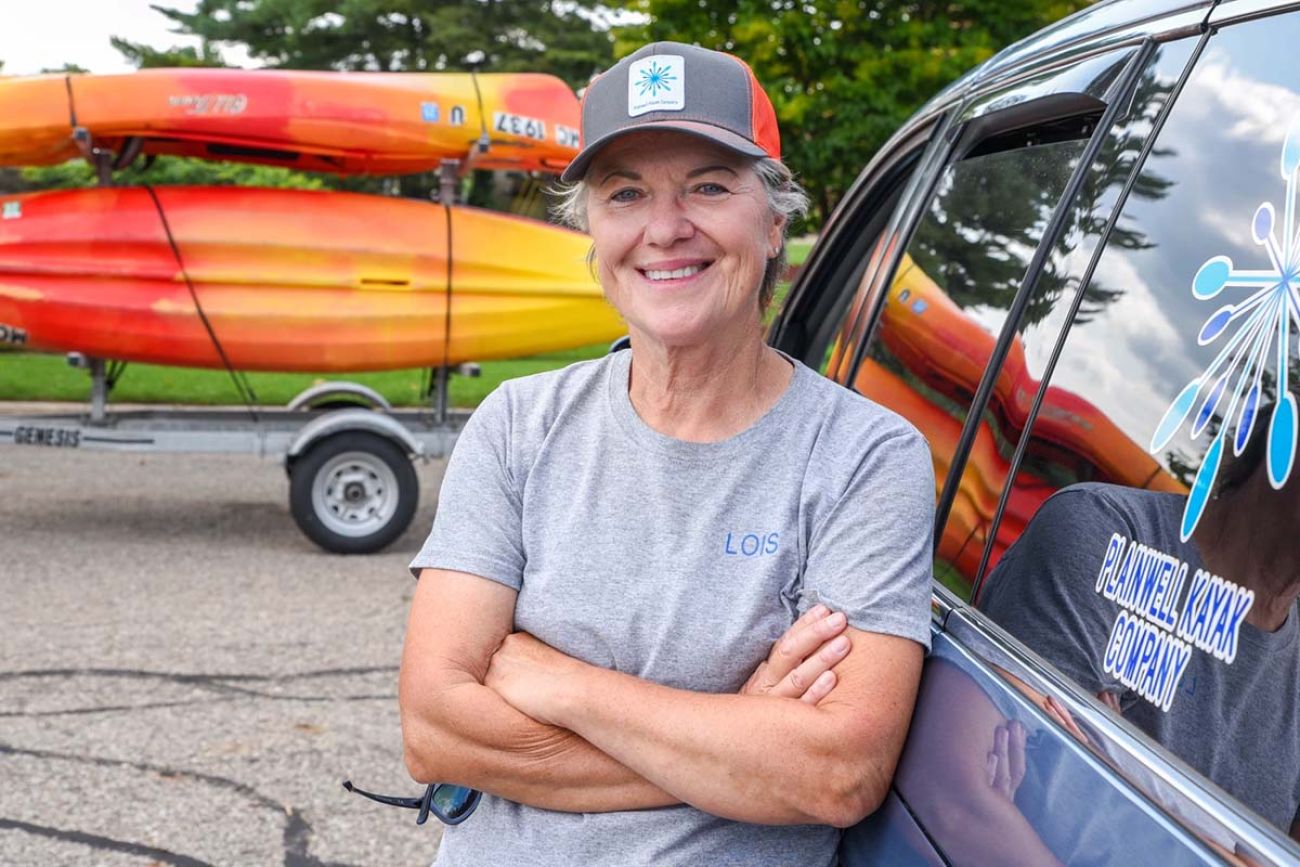
The cost for the dam removal, PCB cleanup, and this current restoration runs into the tens of millions of dollars. But the benefits include making sure the PCB pollution never spreads in a river that feeds Lake Michigan.
As we watched a pair of ospreys circle above us, looking for fish, Mark Mills said it will take time for vegetation and trees to grow, time for nature to take over. But he predicted at some point you won’t be able to tell there was ever a dam here.
“Our kids and our grandkids should be able to float through here and never know anything was different.”
Michigan Environment Watch
Michigan Environment Watch examines how public policy, industry, and other factors interact with the state’s trove of natural resources.
- See full coverage
- Subscribe
- Share tips and questions with Bridge environment reporter Kelly House
Michigan Environment Watch is made possible by generous financial support from:
Our generous Environment Watch underwriters encourage Bridge Michigan readers to also support civic journalism by becoming Bridge members. Please consider joining today.
See what new members are saying about why they donated to Bridge Michigan:
- “In order for this information to be accurate and unbiased it must be underwritten by its readers, not by special interests.” - Larry S.
- “Not many other media sources report on the topics Bridge does.” - Susan B.
- “Your journalism is outstanding and rare these days.” - Mark S.
If you want to ensure the future of nonpartisan, nonprofit Michigan journalism, please become a member today. You, too, will be asked why you donated and maybe we'll feature your quote next time!


